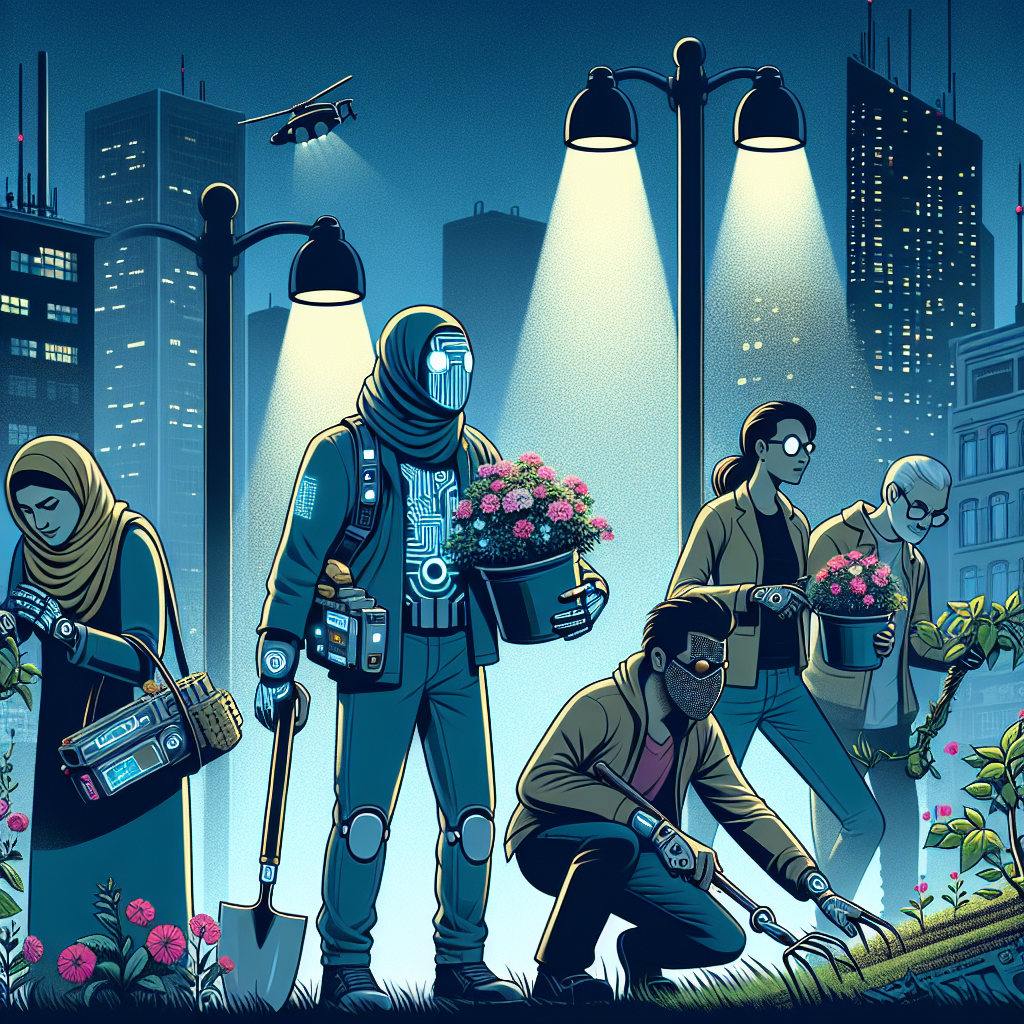Cultivating Change: The Art of Guerilla Gardening
August 12, 2024 at 6:50:42 AM
Explore the world of guerilla gardening, a form of activism that transforms neglected spaces into green oases. Learn about the ethics, benefits, tools, challenges, and legal considerations of this grassroots movement. Discover how guerilla gardening fosters community engagement and environmental stewardship.
II. Understanding Guerilla Gardening
According to Richard Reynolds, the founder of guerrillagardening.org, guerilla gardening is "the illicit cultivation of someone else's land." It involves planting gardens in public spaces without permission, often under the cover of darkness to avoid detection. Guerilla gardeners operate with a do-it-yourself ethos, transforming neglected areas into vibrant green spaces that benefit the community.
III. The Ethics of Guerilla Gardening
While guerilla gardening is typically seen as a positive act of civil disobedience, it does raise ethical questions. Ron Finley, a renowned guerilla gardener, emphasizes the importance of community engagement in guerilla gardening projects, stating, 'Gardening is the most therapeutic and defiant act you can do... it forces you to get up, it forces you to care.' Engaging with the local community and respecting existing flora and fauna are essential considerations in ethical guerilla gardening.
IV. Benefits of Guerilla Gardening
Guerilla gardening offers numerous benefits, including improving urban aesthetics, increasing biodiversity, mitigating pollution, fostering community cohesion, and promoting sustainability. Chris Baines, an environmentalist, notes that guerilla gardening 'is a positive step towards reclaiming our urban environment, making it not just more beautiful but also more sustainable.'
V. Case Studies of Successful Guerilla Gardening Projects
- The 'Liz Christy Bowery-Houston Garden' in New York City, established in 1973, was one of the first guerilla gardening projects in the United States.
- The 'Edible Bus Stop' project in London transformed a neglected bus stop into a vibrant edible garden, showcasing the power of guerilla gardening to create functional green spaces in urban areas.
VI. Tools and Techniques for Guerilla Gardening
Guerilla gardeners utilize a variety of tools and techniques, such as seed bombs, community collaborations, DIY irrigation systems, and creative use of recycled materials. The strategic selection of plant species that are low maintenance and well-suited to the local climate is crucial for the success of guerilla gardening projects.
VII. Dealing with Challenges in Guerilla Gardening
Guerilla gardeners face challenges such as vandalism, lack of water access, soil contamination, and legal repercussions. Staying resilient, building strong community partnerships, and conducting thorough site assessments can help address and overcome these challenges.
VIII. Legal Considerations in Guerilla Gardening
The legality of guerilla gardening varies by location, with some cities embracing it as a form of urban beautification and community engagement, while others view it as trespassing or vandalism. Understanding local laws and regulations, seeking permission when possible, and advocating for policy changes can help navigate the legal landscape of guerilla gardening.
IX. Conclusion
Guerilla gardening is a powerful form of activism that empowers individuals to transform neglected spaces into thriving urban oases. By understanding the principles, ethics, benefits, tools, challenges, and legal considerations of guerilla gardening, we can work towards creating more sustainable and vibrant communities.
X. Call to Action
Join the conversation on guerilla gardening by sharing your insights, experiences, and ideas. Explore local opportunities to participate in guerilla gardening projects or start your own initiative. Let's come together to cultivate positive change, one seed at a time.
Topics




